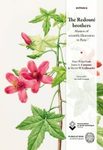![Human-Animal Interactions in the Eighteenth Century Human-Animal Interactions in the Eighteenth Century]()
Click to have a closer look
About this book
Contents
Customer reviews
Biography
Related titles
About this book
Language: Contributions in English or French
How did humans respond to the eighteenth-century discovery of countless new species of animals? This book explores the gamut of intense human-animal interactions: from love to cultural identifications, moral reflections, philosophical debates, classification systems, mechanical copies, insults and literary creativity.
Dogs, cats and horses, of course, play central roles. But this volume also features human reflections upon parrots, songbirds, monkeys, a rhino, an elephant, pigs, and geese – all the way through to the admired silkworms and the not-so-admired bookworms.
An exceptionally wide array of source materials are used in this volume's ten separate contributions, plus the editorial introduction, to demonstrate this diversity. As eighteenth-century humans came to realise that they too are animals, they had to recast their relationships with their fellow living beings on Planet Earth. And these considerations remain very much live ones to this day.
Contents
List of Figures
Notes on Contributors / Notes sur les contributeurs
1. Editorial Introduction Animals from Pests and Predators to Companions and Cultural Markers / Penelope J. Corfield, Stefanie Stockhorst and Jürgen Overhoff
2. Introduction des editeurs Les animaux : de ravageurs et de prédateurs à des compagnons et des repères culturels / Penelope J. Corfield, Stefanie Stockhorst et Jürgen Overhoff
3. Human–Animal Relations in the Eighteenth Century Insights from Current Fields of Research / Anna-Marie Humbert
4. Of Dogs and Horses Frederick the Great and His Dearest Animals / Jürgen Overhoff
5. The Invention of the ‘Cheval-machine’ as a Medical Response to the Machine Paradigm of the Enlightenment Samuel Theodor Quellmaltz in Context / Stefanie Stockhorst
6. « Les animaux, nos confrères » dans l’œuvre de Voltaire / Halima Ouanada
7. On the Popularity of Songbirds in Eighteenth-Century German Fables / Kristin Eichhorn
8. The Talking Parrot Brazilian National Symbol and Avatar of Human Identity for John Locke / Antônio Carlos dos Santos
9. Troglodytes, the Monkey Diana and the Aping Swede – Carl Linnaeus on Apes / Annika Windahl Pontén
10. Les vers à soie et les vers dévoreurs de livres dans une bibliothèque des Lumières luxe et morbidité des ‘insectes changeants’ dans la poésie de Voltaire / Vanessa de Senarclens
11. Electoral Animals in Eighteenth-Century England / Matthew O. Grenby and Kendra Packham
12. “For I Will Consider My Cat Jeoffry” Cats and Creativity in Eighteenth-Century Britain / Penelope J. Corfield
Index of Names / Index des noms
Index of Non-Human Animals / Index des animaux non-humains
Customer Reviews
Biography
Stefanie Stockhorst is a Professor of Early Modern German Literature at the University of Potsdam. She was President of the German Society for Eighteenth-Century Studies (2014–18; 2008–10 Vice-President) and is an Elected Member of the Executive Committee of the International Society for Eighteenth-Century Studies (ISECS) since 2019.
Jürgen Overhoff is a Professor for the History of Education at the Westfälische Wilhelms-Universität Münster. He is President of the German Society for Eighteenth-Century Studies (since 2018) and a Delegate Member of the Executive Committee of the International Society for Eighteenth-Century Studies (ISECS) since 2018.
Penelope J. Corfield is Professor Emeritus of History at Royal Holloway, University of London, Visiting Fellow at Newcastle University UK, and President of the International Society for Eighteenth-Century Studies. Her writings focus on British social, cultural and urban history in the 18th and 19th centuries, as well as general theories of history.














![Die Vogel-WG: Die Heinroths, ihre 1000 Vögel und die Anfänge der Verhaltensforschung [The Bird Wohngemeinschaft: The Heinroths, Their 1000 Birds and the Beginnings of Behavioral Research]](http://mediacdn.nhbs.com/jackets/jackets_resizer_medium/26/267983.jpg?height=150&width=107)



















